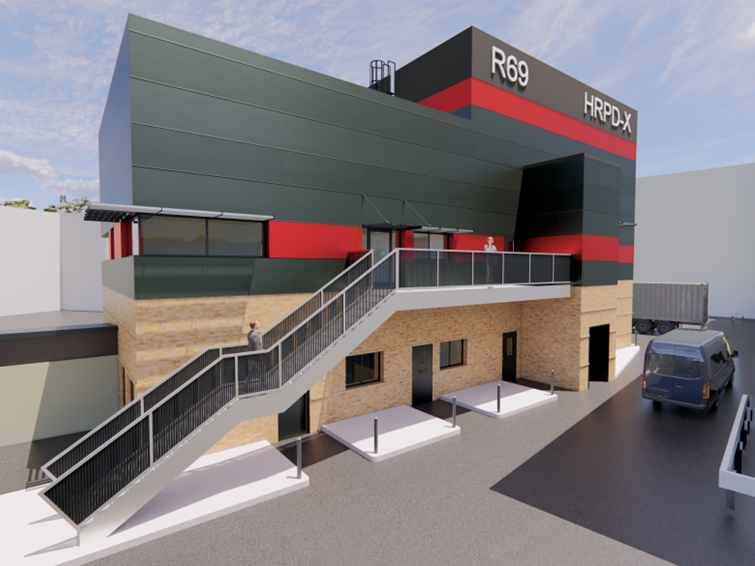After almost 40 years of operation, HRPD retains its position as one of the leading high-resolution neutron powder diffraction instruments in the world. However, the scientific scope of modern crystallography and materials science in general has evolved over HRPD's lifetime; furthermore, both hardware and software capabilities have grown. In order to remain at the forefront of neutron scattering science in the coming decades, we plan a complete upgrade of both the instrument and its infrastructure.
The HRPD-X upgrade will include provision of a new non-magnetic sample tank, a new complement of detectors (based on wavelength-shifting fibres), and a new building to house the larger and more capable instrument.
Following Treasury approval, HRPD-X, will take place within the framework of the £90M Endeavour Project at ISIS. The dismantling of HRPD and demolition of the R69 building is planned to occur in early 2025, followed by a year of construction on a new building and the subsequent installation of the new instrument. We expect HRPD-X to be ready for commissioning in late-2027 with academic users being welcomed back in 2028.

An artist's rendering of the proposed R69 building meant to house HRPD-X. The design is intended to provide adequate space for user facilities (including a sample prep lab), full accessibility and a safe, efficient and sustainable working environment. The building also aims to retain elements of HRPD's current 'iconic' brick building and red wax tanks.
Key Features of the Proposed Upgrade:
Substantial increase in the solid-angle coverage of the instrument's detector banks with no loss in resolution for time-focussed data:
- x 4.3 in backscattering, relative to the current instrument;
- x 2.5 at 90-degrees 2θ;
- x 90 in forward scattering.
- Increased coverage at low 2θ will expand the maximum d-spacing in the longest time-of-flight window from ~ 16 to ~ 45 Å.
- Substantial increase in detector sensitivity from adoption of wavelength-shifting fibres (from ~ 20 % (at λ = 2 Å) with the current scintillator modules to ~ 65 % with wavelength-shifting fibres).
- Substantial reduction in instrumental backgrounds from adoption of a radial collimator.
- Potential improvements in resolution from adoption of additional incident-beam conditioning devices.
- Ability to carry out experiments in an applied magnetic field by adoption of a non-magnetic sample tank.
Taken together, these enhancements will enable HRPD to extend its world-leading capabilities to include ever small and more complex samples, exhibiting more subtle behaviours and variations in properties, as well as samples contained in more complex environments, including high-pressure devices and magnets.
As a result we expect HRPD-X to remain at the forefront of crystallography based on high-resolution neutron powder diffraction for decades to come.
Upgrade workshop in 2026:
A workshop to update the user community on the progress of the upgrade and to highlight both past achievements and future opportunities will be held in 2026 (venue TBD). If you wish to be notified about any updates in relation to this workshop, or to participate through delivery of an oral or poster presentation then please contact us (Dr Dominic Fortes & Dr Christopher Howard).
A short technical paper describing the proposed upgrade was presented at the 2019 ICANS meeting:
Fortes, A. D., & Gibbs, A. S. (2020): HRPD-X; a proposed upgrade to the ISIS High-Resolution Powder Diffractometer. J. Neutron Res., 22, no. 2-3 (2020): 91-98. Proceedings of the 23rd Meeting of the International Collaboration on Advanced Neutron Sources (ICANS-XXIII), Chattanooga, Tennessee, United States, 13-18 Oct 2019. (doi:10.3233/JNR-190130). Access the free author-accepted manuscript here.
 HRPD_meeting_07_01_2020_PRINT_ANNOTATED_v2.pdf
HRPD_meeting_07_01_2020_PRINT_ANNOTATED_v2.pdf
